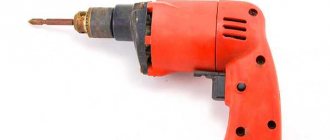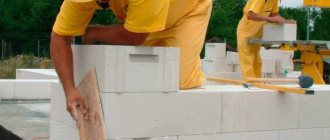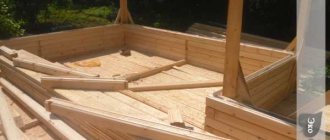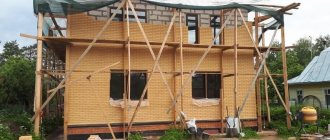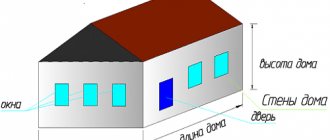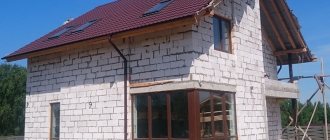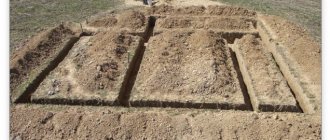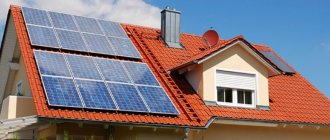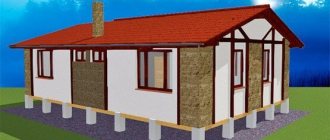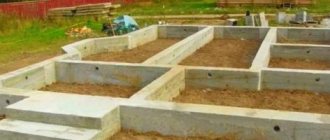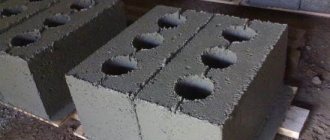Concept of aerated concrete
Aerated concrete is one of the variants of concrete with a cellular structure, made on the basis of alkaline binders (cement, lime, fly ash) that react with aluminum paste. As a result, a gas is formed, which loosens the structure of the concrete mixture and forms cells in the hardening stone that are almost identical in size and shape.
Slag can also be present in such concrete, only in ground form, as a cheaper siliceous filler. But most often, combinations of cement and lime are used in aerated concrete, in different percentages. If cement predominates in quantity, the finished products are gray in color. When there is more lime, they turn out almost white and are called gas silicate.
Autoclaved aerated concrete often contains more lime, because the calcium it contains, reacting with silica under the influence of high temperature and pressure, changes its structure at the molecular level. It turns into the more durable mineral calcium hydrosilicate. Thanks to this transformation, the strength class of autoclaved aerated concrete is always higher than that of non-autoclaved aerated concrete with a similar density.
Actually, this is why official manufacturers of aerated concrete have long abandoned hydration technology. It is mainly used in the production of foam concrete. It is made only from cement, and concentrated synthetic foaming agents are used as a pore-forming component. As a result of their influence on the mixture, unevenly distributed closed pores are formed. Foam concrete is less hygroscopic, but this is where all its advantages over autoclaved aerated concrete end.
Vitaly Kudryashov
Builder Author of the portal full-houses.ru
Ask a Question
To understand which is better: a foam block, a gas block or a cinder block, you just need to compare their individual qualities. Some are better, some are worse, but if we consider the ratio of density, strength class and thermal conductivity, aerated concrete has the best result. We emphasize – autoclave hardening. Non-autoclaved aerated blocks have properties similar to foam concrete.
Types and features of application
Since synthetic aerated concrete has the best characteristics, it is this that designers include in the project as a wall material. However, at the exit from the autoclave, in which the products are processed with hot steam, their humidity can be up to 40% - this is the main problem that must be dealt with during the construction process.
- Humidity, of course, returns to normal, but not immediately. At first, it may even increase, since the wet processes accompanying the installation of walls, pouring screeds, and interior finishing work, which are carried out first, only add moisture. But then the aerated concrete begins to dry. It easily releases moisture into the environment - provided that this is not interfered with by the façade finishing.
- In addition to the initial moisture, during the operation of heated buildings, vapor also passes through the walls. Even if vapor-proof materials are used in the finishing of the premises, some of the steam still penetrates into the thickness of the walls and must be able to escape outside.
- This is the main feature of aerated concrete, which has thermal conductivity and vapor permeability coefficients similar to wood. They say about such walls that they “breathe”. Provided that steam removal is properly organized using finishing, a very comfortable microclimate is established in the house.
You can create normal working conditions for aerated concrete as follows:
- Do not immediately start finishing the façade, but give the walls time to dry. Depending on the season and climatic conditions of the area as a whole, this may take 3-9 months.
- To insulate the facade, which is often provided to eliminate thermal inhomogeneity of the masonry, it is better to use mineral wool, which has an even higher vapor permeability than aerated concrete. It is suitable both for laying into a ventilated facade system and under plaster.
- For adhesive finishing, it is better to use plasters specifically designed for cellular concrete - or aerated concrete tiles. You can use any hanging materials, just not too heavy ones, provided that there is a ventilated gap between the front covering and the base. This also applies to brick cladding, which is generally one of the most used facade finishing options.
When comparing aerated concrete or cinder block, which is better for residential construction, one cannot ignore the material’s ability to permeate vapors. Cinder concrete has an almost zero vapor permeability coefficient (0.03 mg/m*h*Pa), so vapors accumulating in rooms can only escape through ventilation holes and open windows.
However, ventilation outlets are only available in kitchens and bathrooms, and the outside temperature does not always allow opening the windows in winter. As a result, a thermos effect appears in the rooms, which is primarily indicated by fogging windows. This can also happen in an aerated concrete house if you do not allow the masonry to dry properly - and also if you insulate it from the outside with polystyrene foam, line the façade closely with brick, or use fiber-reinforced concrete or ceramic tiles with adhesive for finishing.
As for cinder concrete, it can be finished on the outside in any way you like, since it still does not allow steam to pass through. Most often, they are lined with decorative slag concrete products or indented bricks, and foamed polymers or foam concrete are pumped into the resulting space. The result is quite warm three-layer walls, but the microclimate in the house is not as comfortable as when using aerated concrete.
The concept of aerated concrete, its types and properties
Aerated concrete is an extremely popular material, which is directly related to its set of properties and qualities. Let's look at which of them are the reason why an increasing number of developers prefer to build their buildings using aerated concrete.
Specifications
Let's look at the table and analyze the indicators.
Properties and qualities of aerated concrete:
| Name | Meaning | Comments |
| Thermal conductivity | From 0.09 to 0.38 | These values are typical for dry products. With operating humidity, this figure can increase significantly. In this case, the release humidity of products should not exceed 25% for sand-based materials and 30% for ash products. We will consider the dependence of thermal conductivity on the strength of products below. |
| Frost resistance | Up to 150 cycles | The minimum value for blocks used for the construction of external walls should not be less than 25 in accordance with GOST, and for the rest - not less than 15. Some manufacturers claim that an aerated block can withstand up to 150 freezing and thawing cycles. |
| Density | 300-1200 | These indicators are established by GOST. Depending on the density, there are several types of aerated concrete. |
| Strength grade | From 1.5 to 12.5 | The material is strong enough to be used to construct buildings several stories high. |
| Shrinkage | 0.3 mm/m2 | Shrinkage is a problem with many wall materials and is also common with aerated concrete. |
| Water absorption | 25% | The material absorbs moisture quite strongly. This is the main drawback. |
| Environmental friendliness | 2 | If we compare aerated concrete with wood, then for the latter this indicator is 1, and for aerated concrete it is 2. |
Structure of aerated concrete
Classification
In accordance with GOST, aerated concrete has several classifications related to various factors. Let's take a closer look at them.
Depending on the hardening method, aerated concrete can be autoclaved or non-autoclaved. At the last stage of production, autoclaved aerated concrete is processed in special equipment - an autoclave, under the influence of high temperature and pressure, the products harden and gain brand strength.
Non-autoclaved aerated concrete hardens under natural conditions; sometimes it is heated using special machines to a low temperature in order to speed up the process. This material reaches brand strength after 28 days.
Autoclaved and non-autoclaved aerated concrete
Depending on the strength of the products, aerated concrete is divided into:
- Structural;
- Thermal insulation;
- Structural and thermal insulation.
External differences between aerated concrete of different strengths
- The first type is the most durable, the indicator varies from 1000 to 1200. It is used in the construction of buildings up to 12-15 meters high. It needs additional insulation, since the thermal conductivity coefficient also increases along with strength.
- Thermal insulating aerated concrete is the least durable, with an index of 300-400. It is used exclusively for the purpose of insulation, since it cannot withstand any loads other than its own weight.
- Structural thermal insulating aerated concrete is an ideal combination of thermal conductivity and strength. Such products are most popular among private developers. It is used in the construction of walls and partitions.
Let's look at the table.
Dependence of density and thermal conductivity coefficient:
| Type of aerated concrete | Density | Dry thermal conductivity |
| Structural | 1000-1200 | 0,29-0,34 |
| Thermal insulation | 300-400 | 0,09-0,12 |
| Structural and thermal insulation | 500-900 | 0,13-0,28 |
Another classification is based on the type of silica component.
Products can be manufactured on:
- Sand, more often quartz;
- On the ashes;
- On other industrial waste.
Products are divided according to the type of binder:
- On lime binder;
- On cement;
- On the sand;
- On slag;
- On a mixed binder;
- On ash.
Differences in geometric deviations also made it necessary to classify products.
Depending on the accuracy category, gas blocks are:
- First category of accuracy;
- Second category of accuracy;
- Third category of accuracy.
Note! Blocks of different categories differ from each other only by permissible deviations. Their technical and mechanical characteristics are similar and may differ only due to their affiliation with one manufacturer or another.
Let's consider the table of permissible deviations in accordance with GOST.
Geometric deviations of products:
| Deviation | 1 category | 2nd category | 3 category |
| To size | No more than 1.5 mm | No more than 2 mm | No more than 4 mm |
| Diagonally | 2 mm | 3 mm | 6 mm |
| Broken corners | 5 mm | 5-7 mm | 10 mm |
| Edge violations | 3 mm | 4 mm | 8-10 mm |
Note! Products that are characterized by exceeding these deviations should not exceed 5% of the batch for each indicator.
Strengths and weaknesses of products and buildings built from them
Now it’s time to consider the advantages and disadvantages of aerated concrete and products made from it.
The advantages boil down to the following:
- The material is lightweight, which can significantly reduce the load on the foundation.
- Large dimensions will significantly speed up the process of building construction.
- The material is made from a mixture of lime, cement, sand, aluminum powder and water. None of the materials are toxic and do not emit harmful substances. As a result, the products are environmentally friendly.
- Aerated concrete does not burn and does not interact with fire.
- Strength and thermal conductivity indicators are the most optimal. They allow you to build buildings several floors high and, at the same time, save on insulation.
- Frost resistance is at a high level. As already mentioned, the material can withstand up to 150 cycles.
- Variability of external and internal decoration. Walls made of aerated concrete can be finished with almost any material, subject to compliance with technological rules.
- Aerated concrete is easy to use. It can be sawed, sanded, cut. This does not require a highly specialized tool. You can get by with a regular saw or hacksaw.
- Almost anyone can install products.
- The durability of buildings built from aerated concrete reaches 200 years.
- The prevalence of the material among manufacturers and first suppliers makes it possible to find a dealer located nearby and, thereby, save on delivery.
Advantages of aerated concrete
The main disadvantages of the material:
- The most important thing is the hygroscopicity of aerated concrete. It absorbs moisture quite strongly, which makes it more vulnerable. If it crystallizes, the block risks being resolved from within.
The disadvantage can be mitigated by technically correctly executed finishing.
- Fixing elements is one of the difficulties that may arise during the construction of a house. Particularly heavy elements that have a high level of tearing must be secured, of course. It is possible, however, the fixation points will have to be planned at the project level and reinforced in advance with stronger materials. It could be brick or metal.
Less heavy objects can be fastened using specialized hardware designed for products made of cellular concrete.
- Aerated concrete is fragile. It does not tolerate mechanical stress. Chips and cracks may appear as a result of careless transportation or careless attitude during work.
- Shrinkage is another disadvantage. Cracks often appear on the products themselves, as well as on the plaster that has already been applied.
- The presence of handicraft production of non-autoclaved aerated concrete increases the possibility of purchasing low-quality products.
Note! Before purchasing material, always ask the seller (supplier) to demonstrate quality certificates for the products. This will protect you from unsuccessful purchases.
Aerated concrete has no more significant disadvantages.
Manufacturing technology
Before comparing which is cheaper: foam block, gas block or cinder block, it is worth familiarizing yourself with the technology of their production - after all, the final price of any product depends on it.
Aerated concrete
It has already been mentioned that different hardening conditions can be created for cellular concrete. But let’s leave the hydration method (when the blocks gain strength under natural conditions) to small entrepreneurs. Large enterprises that are members of the association of aerated concrete producers produce blocks only using the autoclave method.
At the initial stage, everything happens exactly the same. Here's what the production technology looks like step by step:
- The components are dosed and mixed with water heated to 45 degrees.
- A gasifier is added, the mixture is mixed and discharged into the formwork. Its volume is filled to half, since as a result of the reaction that occurs, the concrete will “grow by leaps and bounds.”
- Standing lasts about 6 hours, if the “dough” rises above the sides of the formwork, the excess is removed.
- The mixture is kept until it gains preliminary strength for another 10 hours, after which one large block of aerated concrete is sent to the cutting complex. Here the array is cut into separate blocks of a given size.
- At this stage, differences between the two technologies appear. If the blocks harden in their natural environment, they are sent to a warehouse for drying. For synthesis, they are loaded onto trolleys and sent to an autoclave.
To gain 100% strength at +20 degrees, any concrete requires 28 days. At +30 degrees, which is maintained in the workshop, this period is reduced to two weeks. In fact, non-autoclave blocks last a maximum of 3 days, after which they are put on pallets, wrapped in shrink film and put on sale. If you decide to buy such blocks, let them rest at least on the site, otherwise the lack of strength will manifest itself as an abundance of hairline cracks in the masonry - especially in the bottom row.
Synthesis technology involves processing raw products in vacuum chambers - autoclaves. To do this, the hot steam pressure in them is increased to 12 atm (190 degrees). As a result of steaming, the hardening process is accelerated, and concrete acquires properties that cannot be obtained under normal conditions.
The changes occurring at the molecular level allow us to consider this method a synthetic one - the stone in this case is not just a frozen solution of sand and binders, but receives artificially specified characteristics.
The main advantage of autoclave material is quality stability. Any customer can be confident in it, because it is impossible to make such a gas block by hand. Each batch of products is confirmed by tests, the results of which are reflected in the passport, and is accompanied by a certificate of conformity.
In modern factories, process automation reaches 90%, and this virtually eliminates the possibility of errors inherent in the “human factor”. For the production of ordinary hydration aerated concrete, as well as foam concrete and cinder concrete, such capital investments are not required, therefore, when comparing whether aerated concrete or cinder block is cheaper, one should not be surprised at the difference in prices.
cinder block
Factory cinder blocks are most often made using vibrocompression technology. Its essence is to compact a slightly moistened (hard) mixture of cement, sand and slag with a press. This production is also almost completely automated, which makes it possible to produce small-piece products in large volumes.
The technology uses the following equipment:
- Stationary or mobile vibropress unit.
- Crusher and vibrating sieve – provide dry ingredients with the required fraction.
- Planetary or paddle concrete mixer. In it, the components of the concrete mixture are mixed not by rotating the drum, but by force, due to the movement of the blade shaft.
- Equipment through which products are given the desired shape: the matrix determines the dimensions, and the punch works like a press.
- Replaceable pallets on which products are pressed and moved to the drying area.
- A belt-type lift or conveyor through which the concrete mixture is delivered to the hopper of a brick making machine.
The process of making cinder blocks is much simpler than in the case of aerated concrete. The matrix is placed in a pallet installed on the table of a brick making machine. The mold is filled with a semi-dry mixture, a punch is lowered onto it, which simultaneously presses and vibrates, compacting the concrete as much as possible. At the end of the stage, finished products will remain on the pallet, which will only need to be allowed to dry. Dry the blocks at ambient temperature for 24 hours, or in steaming chambers for about 8 hours.
When using casting technology, concrete mixed at the usual water-cement ratio is simply poured into molds and waited for hardening.
Overview of the main differences and similarities of materials
And now that we have already examined the characteristics of both materials, let’s try to figure out what is better: aerated concrete or cinder block? Let's use the table.
Cinder block or aerated concrete: choosing the winner:
| Indicator or characteristic | Comments |
| Thermal conductivity | In this indicator, aerated concrete definitely wins. This is due, first of all, to its lower density compared to cinder block. |
| Frost resistance | The frost resistance of aerated concrete is also higher, two to three times, depending on the manufacturer. |
| Shrinkage | But when comparing the shrinkage rate, the palm belongs to the cinder block. He doesn't sit down. But aerated concrete can even crack as a result of this phenomenon. |
| Moisture absorption | Both materials strongly absorb moisture and therefore require technically correct finishing in order to prevent its detrimental effect on the products. |
| Strength, density | Cinder block is somewhat more durable, but not by much. |
| Variability of finishes | Walls made from both products can be finished with almost any material. |
| Construction speed | Since both cinder block and aerated concrete are large in size, the construction speed of both is high. Depending on the size, the blocks can replace a laying of up to 15 bricks. Agree, the process will happen much faster. |
| Difficulty of construction | Special difficulties during construction usually do not arise if you do not take into account the mandatory reinforcement. |
| Ease of material processing | Both cinder block and aerated concrete are easy to process. They are easy to cut and sand. |
| What is cheaper: aerated concrete or cinder block? | Cinder block is somewhat cheaper. |
| Complexity of production | The technology for producing materials is not complicated. Moreover, non-autoclave options can be made at home without significant expense. In this case, you can even partially build the equipment yourself. |
| Scope of application, popularity among developers | Aerated blocks are often used in the construction of house walls, and cinder blocks are used for the construction of basements and plinths. The scope of application for both materials is quite wide. It is worth noting that aerated concrete is also used in liquid form. For example, for installing a screed or base under a warm floor, for insulating a roof. |
Despite the fact that aerated concrete wins in many respects, it is still difficult to say which is better. Since a lot depends on what qualities are most important for the developer and what individual requirements he places on the material for building walls.
Application in construction
Since aerated concrete and slag concrete are endowed with unequal properties, the scope of application is somewhat different. Let's look at exactly how you can use these and other block options.
Aerated concrete
The ability to produce aerated concrete of varying densities allows it to be used in a variety of fields. This:
- construction of load-bearing walls in houses up to three floors;
- filling reinforced concrete frames in multi-story buildings;
- construction of interior partitions;
- insulation of enclosing structures;
- use as permanent formwork when forming monolithic beams (reinforced belts, lintels);
- Bar lintels are made from aerated concrete in the factory;
- there are blocks and slabs for installing prefabricated monolithic floors;
- Some manufacturers offer decorative aerated concrete tiles.
cinder block
If the average density of gas blocks used in construction is 500 kg/m3, then for cinder blocks, if they were made by casting without pressing, this is at least 750 kg/m3. For pressed products, the density reaches 1450 kg/m3, hence the higher strength class. This allows them to be used not only for erecting the walls of buildings above the zero level, but also:
- lay out basement walls, provided that there is a foundation slab or strip underneath them;
- use permanent formwork made of slag concrete to form foundation strips;
- build fences, especially considering the existence of textured products;
- build gazebos;
- form the steps of the street stairs;
- use in landscape design.
Gas blocks and their properties
Builders in Europe began to use gas blocks at the beginning of the last century. For more than 30 years, this material has been actively used by compatriots.
Aerated concrete blocks are made using special technology. Aluminum powder is added to the concrete and the mold is filled. Next, they are sent to an autoclave for foaming and hardening. As a result of chemical reactions under pressure, a porous material of a rectangular shape is obtained - a gas block.
It has good thermal insulation and low thermal conductivity. Lightness is combined with strength, which is 1.5 - 3.5 kgf/cm² . And the density is 0.3 - 1.2 tons per m³. The diffusion properties of the material allow you to “breathe” without retaining moisture inside. High frost resistance and environmental friendliness are combined with fire safety. The ease of processing with hand tools is combined with the specific lightness of the material and the speed of wall construction.
The disadvantage is its fragility and high water absorption capacity.
Based on density and thermal conductivity, they are divided into three categories:
- Thermal insulation , brands D300 – D500, are used for wall insulation;
- Structural and thermal insulation , grades D600 – D900, for internal partitions;
- Structural , grades D1000 – D1200, for external and internal walls.
Structures made of aerated concrete blocks have the highest fire safety of degrees I and II.
Differences and similarities of the material
The similarity between aerated blocks and cinder blocks lies only in the fact that both materials are used mainly in low-rise construction. Otherwise, there are only differences - starting from the composition and manufacturing technologies, and ending with the physical and technical properties.
Here's what the list of these differences looks like:
| Material evaluation criterion | Aerated concrete | Cinder concrete |
| Construction of walls without a load-bearing frame | 3 floors | 10 floors |
| Construction of basement walls | It is forbidden | Can |
| Construction of fences | Not used | Apply |
| Factory invoicing | Impossible | Maybe |
| Use in landscape design | Do not use | Use |
| Average density of the blocks used (the smaller, the warmer the walls) | 400-500 kg/m3 | 750-1200 kg/m3 |
| Average thermal conductivity of masonry (the lower, the better) | 0.09-0.14 W/m*S | 0.28-0.63 W/m*S |
| Frost resistance (cycles) | 35-100 | 50-200 |
| Shrinkage (mm/m) | 0,3 | 0,03 |
| Average joint thickness in masonry (mm) | 3 | 10 |
| Average wall thickness to ensure normal thermal efficiency (mm) | 400 | 600 |
| Sound absorption (dB) | 53 | 43 |
| Minimum compressive strength (kg/cm2) | 28,94 | 45,84 |
| Largest wall block size (cm) | 625*250*500 | 390*190*188 |
Characteristics of cinder block
In the past, cinder block was associated with metallurgy. This durable material was created from metal waste, the main component being blast furnace slag. Now the situation has changed. And the composition of the product is significantly different.
Important! Brick waste, small crushed stone, stones, and combustion products are added to the cinder block. Sometimes sawdust is used.
When figuring out which is better than a cinder block or a foam block for building a house, this point must be taken into account. The components of cinder block guarantee the strength of the structure and ease of construction. And the use of waste allows you to purchase material at low prices and save on construction.
The cinder block manufacturing process consists of several stages. Dry cement and a certain filler are mixed together, and water is added to the composition. When the mixture turns into a homogeneous mass, it is poured into molds and sent for compaction. Each mold must sit for several days to dry and harden. You can take fresh cinder blocks and use them immediately - there is no prohibition in this. But this is not entirely correct, since the cement becomes very strong only after a month. Experts recommend waiting time after the material has been manufactured, and then starting construction.
Advantages of cinder block
- There is no need to worry about dampness occurring inside the building.
- No fungus, bacteria on the walls, mold or unpleasant odor.
- Speed of construction. Since cinder blocks are light in weight but large in size, construction moves much faster.
- Fire resistance. Important for homes or businesses where there is interaction with fire.
- Finished walls dry instantly even in a fairly humid climate.
- There is no reaction to sudden changes in temperature or frost.
Important! In addition to the positive qualities, there are also those who talk about the disadvantages of cinder block construction. But all of them can be eliminated by an experienced technician.
Disadvantages of the material
- Lack of sound insulation. For those who value peace and quiet, such a house is not suitable for living.
- Fragility. Each block individually can be damaged and damaged.
- The finished walls don't look too good. We need finishing not only inside, but also outside.
- Penetration of moisture into the interior. In order to protect the finished building from steam and water, waterproofing is needed on all sides of the house.
- The material cannot be used to build houses that are too large. The building should have no more than 3 floors.
The comparative characteristics of cinder block and foam block are based primarily on the composition of the materials. Properties change with the addition of a specific component. For example, there are heavy and light cinder blocks. The first option is considered more durable and is used for laying foundations and first floors. The second one is often used for building walls.
Advantages of cinder block
Using industrial waste as a filler can significantly reduce the cost of the finished material. This property is the main advantage of cinder blocks.
But it is not only the low cost of the material that determines its widespread use. The following characteristics can confidently be considered positive qualities:
- good strength and durability have been confirmed by many laboratory tests;
- the absence of flammable components in the cinder block makes it fire safe;
- resistance to the harmful effects of mold and various fungal formations;
- the ability to produce material at home;
- the light weight of the block allows construction to be carried out without the use of lifting equipment;
- Large sizes help to increase the speed of construction of buildings.
It is difficult to say which is better - a cinder block or a foam block, since the versatility of block materials allows the construction of both residential buildings and outbuildings.
Characteristics of aerated concrete
Table of technical characteristics of aerated concrete.
Aerated concrete is also an artificial building stone. It consists of quartz sand, lime and aluminum powder. May also include gypsum and industrial waste, such as ash and slag. However, thanks to a special manufacturing technology, it is environmentally friendly and safe for humans. This is a new generation material that has a number of significant advantages.
- Firstly, as already noted, aerated concrete does not contain impurities harmful to humans and does not emit gases and dust into the environment. That is, it meets all environmental requirements. In this parameter, gas blocks are ahead only of the exclusively natural material – wood. In addition, the blocks themselves do not accumulate fungi, mold or bacteria inside themselves. This means that you will not have to additionally treat the walls with antiseptics.
- Secondly, aerated concrete is very durable, frost-resistant and non-flammable. Its service life is designed for more than 100 years, and over time it does not collapse, but becomes harder and harder. Aerated blocks will withstand more than 200 cycles of freezing and thawing, and since they consist only of mineral components, they do not support combustion.
- Thirdly, this is one of the “warmest” materials. Due to their low level of thermal conductivity, aerated concrete blocks with a thickness of about 40 cm can compete with 0.5 m brickwork. As a result, the cost of heating your home can be reduced by 3 times! In this case, additional thermal insulation is not required.
- Fourthly, despite its strength, aerated concrete is better than other materials, it can be processed with tools, sawed, drilled, and is easy to finish and install. It does not rot or rust, making it possible to very quickly construct not only low-rise residential buildings, but also high-rise public buildings and even industrial facilities.
Characteristics of foam block
The composition of the foam block includes sifted sand, cement, water and plasticizers (special components that foam the mixture).
Important! It is the last component that serves as the main difference that affects the characteristics of the material.
The technology for creating products has several stages. First, the filler is foamed and mixed with another composition. After this, the resulting mixture is poured into molds and waited for complete drying.
Advantages of foam blocks
- Exact dimensions. You can easily build walls without adjusting each element to certain parameters.
- They don't release heat. This will help you save on heating costs in the future.
- They do not allow moisture to pass through. Therefore, a building made of such material does not require any additional waterproofing. After all, the material itself almost does not absorb water.
- No extraneous noise will be heard inside the house, unlike cinder block buildings. For those who like to live in silence, a foam block house is ideal.
- Light weight of each component. It does not require a very strong and expensive foundation; you do not need to use special equipment to install walls.
- Foam concrete makes it easy to lay wiring and other communications.
- Has environmental properties. It is safe for human health.
But this building material also has some negative aspects.
Disadvantages of foam blocks
- The material is not durable. Therefore, too tall multi-story buildings are not built from it.
- Does not “accept” standard fasteners. Walls cannot hold nails and other hard elements.
- Over time, shrinkage occurs.
- There are strict rules for masonry, since the material does not adhere to ordinary mortars. A special composition is needed.
Another difference between foam blocks and cinder blocks is that the former are similar to ordinary bricks when it comes to characteristics. But at the same time they are much cheaper. Delivery will also be inexpensive. You can quickly build a house from such material. The products are suitable for the construction of small private houses, cottages or low-rise buildings.
